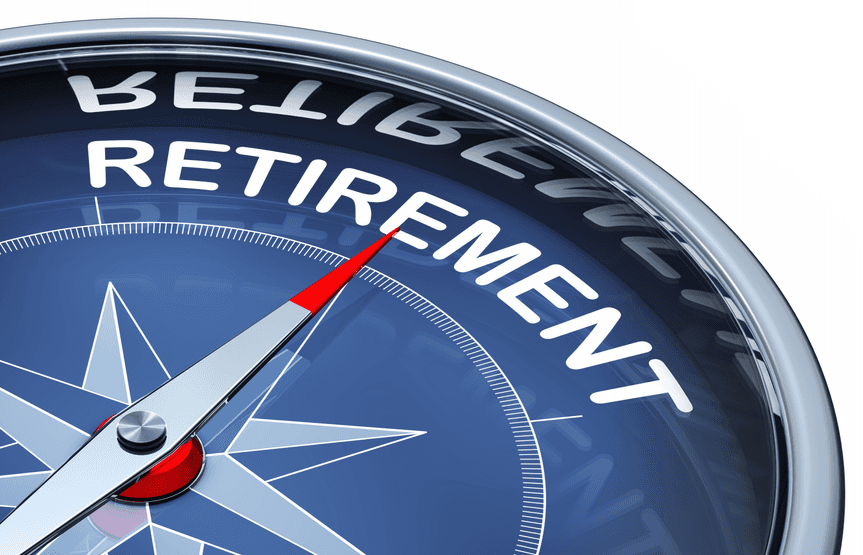Many people think about securing themselves financially for their old age. Sure, everyone wants to maintain their quality of life when they’re old, and retirement planning is often seen as one of the primary means of achieving this.
- But what exactly is a retirement plan?
- How can you best protect yourself financially for your old age?
- What are the differences between the various types of retirement plans?
Very important questions, and their answers can help you ensure you’ll enjoy wealthy years in your retirement.
The difference between the pension systems in the USA and Europe.
Pension systems in Europe and the USA are very different.
While the popular belief is that the pension system in European countries is generally better than the one in the USA, recent reports contradict that idea.
Of course, there are differences between the various countries in Europe, but on the whole, people in the USA feel much more protected for their old age than Europeans. By “feel protected”, we mean that respondents feel confident that their income in retirement will be similar to that during employment.
There are fundamental differences between the pension systems in Europe and the USA.
In the USA, people usually contribute part of their income to 401(k)-type plans. While that might sound obscure to Europeans, it’s simple: employees contribute a certain percentage of their salaries to investment vehicles such as funds, stocks, and bonds.
The benefits for employees are significant. First, their contributions to 401(k) are tax free. Their gains are also tax free, and often employers match a certain percentage of the employee contributions.
Put simply, you invest part of your income for your pension, and you are greatly supported by the government, through tax relief, and by employers, through matching contributions. A great scheme indeed.
The pension systems in Europe couldn’t be more different.
In Europe, people’s pensions are paid by the taxes paid currently by working people. Yes, that’s correct: when you work in Europe, part of your income is contributed to the pension system, not for your future pension but for the pensions of other people who are currently retired. That sounds quite strange to the American reader – and others.
As you can imagine, this pension system in Europe has one huge problem: the ageing population.
There are more and more people at retirement age, and a smaller and smaller percentage of people of working age. As a result, the gap between the salaries of working people and pensions paid to retirees is continuously increasing. Simply put, there are not enough working people to pay the pensions of the large number of people in retirement.
European countries are trying to cope with that problem by introducing additional state-subsidised pension schemes, mimicking, to some extent, the 401(k) plans in the US. For example, people in Germany (and some other European countries) can contribute part of their salary to an additional pension scheme based on investment funds, and their contributions are tax free.
These additional pension schemes in Europe seem very similar to the 401(k) in the USA, but there is one huge difference between them. It is very, very, very (can’t stress it enough) important, so let’s review it carefully.
The big difference between the 401(k) plans in the US and the investment-based pensions in Europe
So, on the surface, investment-based pension schemes in Europe look very similar to the 401(k) plans in the USA. They are both based on investment vehicles, mutual funds, or ETFs, the employee contributions are tax free, and employers often match a certain percentage of the contributions.
But there is one huge difference between them, and you need to know about it because it’s of utmost importance.
- 401(k)-type plans can be inherited.
- European investment-based pension plans cannot be inherited.
Yes, that’s right. In the USA, when you contribute to your 401(k) plan, your children can inherit it when you pass away.
In Europe, things are quite different. When you contribute to an investment-based additional pension scheme, in theory, only your spouse can conditionally inherit your pension. And these conditions are tough. For example, in Germany, your partner can inherit your investment-based pension only if she or he has an income lower than the potential pension. As you can imagine, it’s almost impossible to work for a salary lower than a secondary pension, so effectively that means that your partner will inherit your pension only if she or he is unemployed.
Oh, and you must be married!
If you want your children to inherit your investment-based pension – forget about it in Europe. They can’t. So you “invest” all your life into an investment-based pension scheme, but at the end, the government, not your loved ones, will acquire your “investments”.
So basically, in Europe, even if you participate in such a second pension scheme based on investment vehicles, you still have the huge risk (or let’s say reality) that your loved ones won’t inherit these investments.
We can draw only the following conclusion:
In Europe, it doesn’t make sense to have a second pension based on investment vehicles because it’s not inheritable. Instead, invest the same amount yourself into the same ETFs or funds.
By choosing to invest the same amount of money yourself into the very same investment vehicles, you achieve the same result, but in this case, your family, and not the government, will inherit your money if something happens to you.
Additional retirement planning vehicles
Seeing the imperfections of the pension systems in Europe, and the fact that in the USA the employee contributions to the 401(k) plans are limited to a small percentage of their monthly income, more and more people are looking at alternative methods to secure themselves financially during retirement.
Let’s review the most popular methods.
Investment in ETFs
With the democratisation of online trading due to the emergence of many online trading platforms, it became easier than ever for people to start investing in ETFs.
The big benefit of this method is that the fund takes care of diversifying the portfolio into various investment vehicles, such as company stocks and bonds, for example. You don’t need to think about this. Of course, this comes with a cost of its own: ETFs have a management fee, which you must factor in. But considering the benefit of the fund taking care of the diversification of your investment and managing it, it’s no surprise that this is a very popular option.
You can also see the historical performance of the fund. Sure, that’s never a guarantee of future profits, but at least it speaks for the performance of the fund.
Investment in individual company stocks
This was a very popular option at the dawn of the emergence of online trading platforms. How tempting it was for everyone to get into the skin of the wolf of Wall Street!
Very quickly, wannabe investors realized that they were starting to lose money, rather than making a profit. That’s hardly surprising. Investing is a science, based on a lot of financial and market knowledge, skills, and experience, which you need to have in order to be successful.
Because of that, investing in individual company stocks these days is rather the exception than the norm. Even the people who do this have only a small portion of their portfolio invested in individual stocks, due to the inherently high risk of picking stocks yourself.
Investment in startups
Similar to investing in company stocks, for many people it was tempting to get into the skin of the Shark Tank investor!
Investing in the next PayPal, Facebook or Google – oh, how tempting that is!
Again, these wannabe investors soon realized that in order to be successful, you need a solid financial foundation, market knowledge and expertise in the corresponding company domain.
I cannot tell you how many people I know, workers in companies, who decided to be small angel investors, completely underestimated their knowledge, skills, and experience (or lacked them entirely), and lost large sums of money. Not to mention that due to the high risk involved in investing in startup companies, you usually need to invest in quite a number of them so you have one home run that can compensate for all the others that will flop.
It’s not surprising that this hype soon cooled down. Fortunately, predominantly knowledgeable angel investors continue to invest in startups.
Investment in private equity funds
This option is available only for high-net-worth individuals, as the threshold for investing in private equity funds is pretty high. Usually, it’s from half a million USD to several million dollars – not something the average working person can afford.
Becoming a limited partner (LP) in a Venture Capital fund (VC)
Similar to investing in private equity funds, this option is available only to high-net-worth individuals, as the threshold for investing in VCs is also pretty high. Most VCs in the world will agree to accept you as an LP for not less than half a million dollars, and usually at least one million. The top VCs in the world have much higher requirements and selection processes for their limited partners.
Because of that, this option is again restricted to a very small percentage of the population who can afford to invest such a large amount of money.
Conclusion
We can safely say that pensions in Europe are becoming less and less popular. If you are in Europe, you can assume that you practically won’t have a state pension. Or more precisely, it will be much lower than your actual income during working age.
- The first reason is that state pensions are paid not from your contributions when you were working but from the people who are working now. Because of the ageing population, there will be more and more retired people and fewer and fewer working people.
- The second reason is that people in Europe don’t like secondary pensions based on investment vehicles because, in contrast to the US, they are not inheritable (or more precisely, they are inheritable under very strict conditions: only by your spouse, and only if she or he has a lower income than the pension itself).
In the US, the situation is much better as the 401(k) is based on investment vehicles and it can be inherited by your loved ones.
Still, the amount workers can contribute is limited by regulations.
So it’s not surprising that both in the USA and Europe, more and more people are taking the matter into their own hands and starting to invest part of their monthly income in various investment vehicles, such as ETFs, cryptocurrencies, and company stocks.
Of these, the most appropriate for the regular person is investment in ETFs.
The fund takes care of diversifying your investments, monitoring the performance of individual securities in your portfolio, and tracking and improving the performance of the fund.
Investing in individual company stocks or companies as an angel investor is very risky, and our advice is to do this only if you have a sound foundation of financial knowledge, skills and experience.




